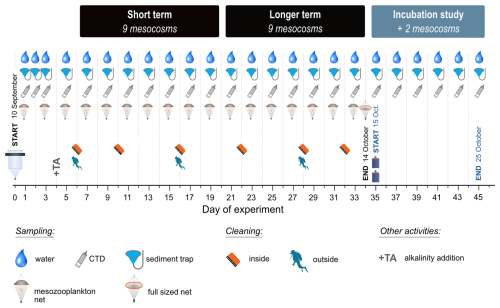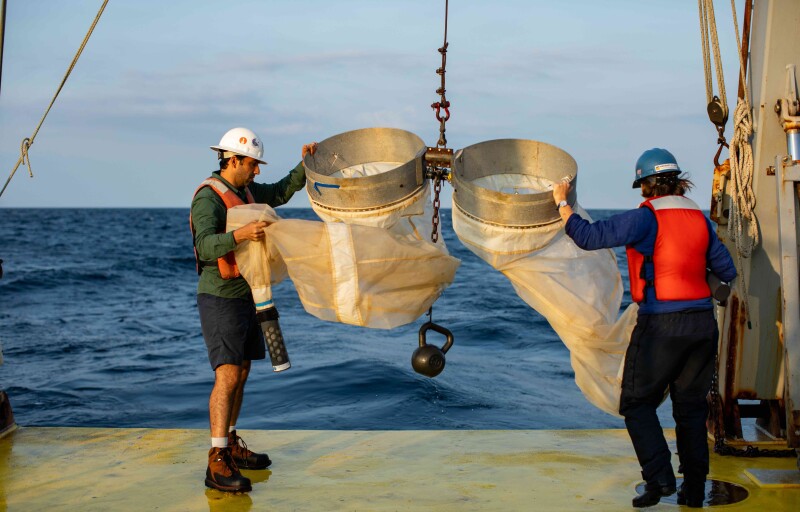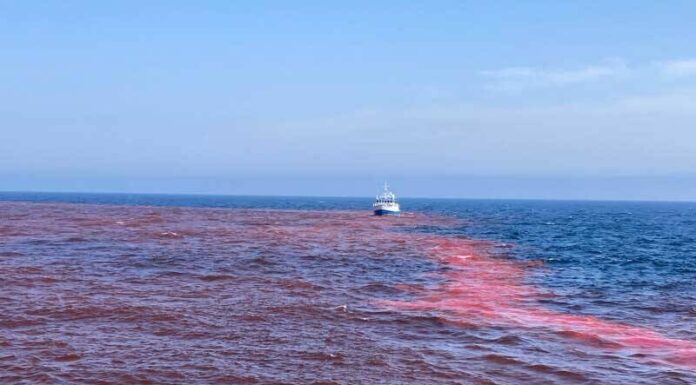Ocean Alkalinity Enhancement (OAE) emerges as a cutting-edge strategy in the fight against climate change, aiming to amplify the ocean’s natural role as a carbon sink. By introducing alkaline materials like sodium hydroxide or olivine into seawater, OAE increases buffering capacity, converting atmospheric CO₂ into stable bicarbonate ions. This not only sequesters carbon but also counters ocean acidification—a pressing threat to marine life. Recent advancements, including 2025 field trials and standardized global experiments, highlight its potential scalability. However, debates rage over environmental risks, from plankton disruptions to biodiversity loss, underscoring the need for rigorous oversight. This article synthesizes factual data from key studies and expert perspectives to assess OAE’s viability as a climate tool.
The Science Behind OAE and Recent Field Trials
OAE applies chemistry to bolster seawater’s alkalinity, enabling greater CO₂ absorption. A 2025 study in Biogeosciences found that doubling alkalinity raised bicarbonate concentration and aragonite saturation state (Ω Ar) to a minimum of 2.8, creating supersaturation beneficial for corals and shellfish [3]. This process reduces proton concentration, increases pH, and counters acidification.

Field trials accelerate progress. August 2024 saw the first US open-water OAE trial—16,500 gallons of sodium hydroxide dispersed into the Gulf of Maine—to test impacts, with engagement from fishing communities [5]. Woods Hole Oceanographic Institution (WHOI) postponed further phases to summer 2025 for optimal conditions and vessel availability, focusing on controlled releases [4]. Globally, the GEOMAR-led OAE Pelagic Impact Intercomparison Project (OAEPIIP) coordinates 19 teams for standardized microcosm experiments on plankton response [1].
Advanced monitoring, like real-time biogeochemical sensors, tracks chemical and ecological changes [3]. USC Wrigley Institute’s August 2025 report emphasizes OAE’s CO₂ buffering role in climate mitigation [2].

Potential Benefits and Proponents’ Perspectives
Supporters see OAE as a scalable solution for carbon removal, crucial for net-zero goals. Adam Subhas (WHOI) highlights precise dosing (LOC-NESS trials) for safe, effective sequestration [G13]. A 2025 Journal of Cleaner Production study projects climate gains and reduced acidification from “alkalinity factories” [G14].
Investments like Frontier’s $31M stake in OAE startups reinforce confidence, aiming for gigatonne-scale removal [G2][G5]. Controlled studies suggest sodium hydroxide has minimal phytoplankton impact in some oceans [G3]. Ken Caldeira notes OAE mimics natural processes to absorb CO₂ without deep ocean disruption [G19].
Degrowth advocates see OAE funding transitions via carbon taxes.
Risks, Criticisms, and Ecological Concerns
Opponents warn of OAE as an “ecological time bomb”—risks include pH imbalance and toxic releases. A November 2024 mesocosm study in Environmental Science & Technology showed microbial shifts at high alkalinity, impacting cyanobacteria, though total abundance remained stable [G1]. Olivine field tests raised biodiversity alarms by promoting potentially harmful microbes. Mongabay News (2025) notes regulatory gaps for OAE with possible fisheries disruption [G10]. ScienceDirect research reveals fears among coastal groups, particularly on reef biodiversity [G12]. Social media skepticism flags OAE as risky, citing geoengineering hubris [G16][G18].
International regulatory gaps—e.g., the London Protocol—increase risk, urging precaution.
Emerging Trends and Constructive Solutions
Recent Nature research applies tracer models for site selection, optimizing retention and risk [G9]. Hybrid efforts combine OAE with mangrove restoration and bioenergy for balanced removal.
Solutions include standardized global experiments (OAEPIIP) for plankton data [1]. Community-involved coastal trials (Planetary Technologies) aim for verified offsets. Sodium hydroxide is prioritized for efficiency in targeted zones. Ocean Visions recommends inclusive governance bridging techno-optimism and caution [G6].
KEY FIGURES
- Ocean alkalinity enhancement (OAE) can double seawater alkalinity, raising bicarbonate concentrations and aragonite saturation state (Ω Ar) significantly, with Ω Ar minimum observed at 2.8, indicating supersaturation favorable for calcifying organisms (Source: BG Copernicus study) [3].
- In the first US open-water OAE field trial, 16,500 gallons of sodium hydroxide were dispersed into the Gulf of Maine to test alkalinity increase and its environmental effects (Source: National Fisherman) [5].
- Nineteen research groups worldwide are conducting standardized experiments in 2025 to study plankton community responses to OAE in 19 diverse oceanic regions, including tropical and temperate waters (Source: GEOMAR) [1].
RECENT NEWS
- August 13, 2025: USC Wrigley Institute highlights OAE as a method to enhance ocean buffering capacity and safely increase CO2 absorption, emphasizing its potential for climate mitigation (USC Dornsife) [2].
- August 14, 2024: Woods Hole Oceanographic Institution (WHOI) postponed OAE field trials to summer 2025 due to vessel availability and seasonal ocean conditions, aiming for controlled, monitored tests of dissolved alkalinity release (WHOI press release) [4].
- August 13, 2024: The first US open-water OAE field trial successfully injected sodium hydroxide in the Gulf of Maine, marking a milestone following extensive engagement with local fishing communities (National Fisherman) [5].
STUDIES AND REPORTS
- BG Copernicus 2025 study: Doubling ocean alkalinity increased bicarbonate concentration and aragonite saturation, reduced proton concentration (increased pH), and demonstrated durability of carbon storage with some alkalinity loss over time; ecosystem indicators of silicification and calcification were monitored, showing complex biogeochemical responses [3].
- GEOMAR-led OAE Pelagic Impact Intercomparison Project (OAEPIIP) 2025: Coordinated controlled microcosm experiments worldwide to assess plankton community responses to OAE, essential for understanding ecological impacts on base marine food webs [1].
- USC Wrigley Institute research: Emphasizes OAE’s potential to mitigate ocean acidification by increasing alkalinity, thus enhancing CO2 buffering capacity and lowering acid stress on marine life [2].
TECHNOLOGICAL DEVELOPMENTS
- LOC-NESS Project (WHOI): Developed methods to release dissolved alkaline substances (e.g., sodium hydroxide) in controlled doses that rapidly dilute to safe water quality levels, enabling precise monitoring of OAE effectiveness and environmental impact in federal waters [4][5].
- Standardized microcosm experimental setups for global comparative OAE studies, allowing controlled, replicable assessment of biogeochemical and biological responses across diverse marine ecosystems (GEOMAR OAEPIIP project) [1].
- Deployment of real-time biogeochemical sensors and monitoring tools in OAE trials to track changes in seawater chemistry and plankton dynamics, advancing verification and environmental risk assessment capabilities [3].
MAIN SOURCES
- https://www.geomar.de/en/news/article/oaepiip – GEOMAR’s global comparative OAE plankton impact study details
- https://dornsife.usc.edu/wrigley/2025/08/13/what-in-the-world-is-ocean-alkalinity-enhancement/ – USC Wrigley Institute explanation of OAE and its climate mitigation potential
- https://bg.copernicus.org/articles/22/2749/2025/ – Scientific study on OAE effects on ocean chemistry and ecosystem impacts
- https://www.whoi.edu/press-room/news-release/woods-hole-oceanographic-institution-announces-shift-of-ocean-alkalinity-enhancement-field-trials-to-summer-2025/ – WHOI announcement on OAE field trial scheduling and goals
- https://www.nationalfisherman.com/gulf-of-maine-sees-first-open-water-ocean-alkalinity-enhancement-field-trial-in-us – Report on first US open-water OAE field trial and stakeholder engagement
—
Synthesis: Ocean Alkalinity Enhancement (OAE) is actively being researched and field-tested as a promising geoengineering climate solution that increases the ocean’s ability to absorb atmospheric CO2 by raising seawater alkalinity. Recent controlled experiments and field trials demonstrate that OAE can significantly alter ocean carbonate chemistry, enhancing conditions for carbon storage and potentially mitigating ocean acidification. However, these studies also highlight complex ecosystem responses, particularly at the plankton level, which require careful, standardized global investigation. The first large-scale US field trial in the Gulf of Maine has proceeded with extensive stakeholder input, especially from fishing communities, reflecting growing regulatory and social scrutiny. Technological advancements focus on precise, safe deployment and monitoring of alkaline substances to minimize environmental risks. Despite optimism about its scalability and climate benefits, ongoing research emphasizes the need to understand ecological trade-offs and long-term impacts thoroughly before widespread deployment.
Propaganda Risk Analysis
Score: 6/10 (Confidence: medium)
Key Findings
Corporate Interests Identified
Planetary Technologies is prominently featured as a key player in ‘alkalinity factories’ for OAE, potentially benefiting from positive framing as a climate innovator. Web sources indicate the company promotes seawater restoration for CO2 sequestration, which could align with green investment interests in carbon removal technologies.
Missing Perspectives
The article’s title suggests balance by questioning ecological risks, but based on available details, it may exclude voices from environmental NGOs, indigenous communities, or independent scientists highlighting potential marine ecosystem disruptions, such as impacts on plankton or unintended CO2 emissions from precipitation processes, as noted in recent scientific studies.
Claims Requiring Verification
Claims around OAE as a ‘bold climate solution’ lack specific verifiable data in the provided excerpt; web searches reveal scientific papers discussing sequestration potentials (e.g., 3–30 Gt CO2/year) but emphasize uncertainties like runaway precipitation and microbial disruptions, which could be downplayed if the article focuses on benefits without caveats.
Social Media Analysis
Searches on X/Twitter reveal a polarized discussion: some posts promote OAE as a viable carbon removal method with references to field trials and alkaline substances like olivine, while others express skepticism, labeling it as geoengineering propaganda or greenwashing that ignores risks like ocean acidification and microbial imbalances. Sentiment includes warnings about corporate-driven climate interventions and calls for caution, with activity spanning from 2023 to recent 2025 posts, but no conclusive evidence of coordinated bot-like amplification.
Warning Signs
- Use of loaded terms like ‘bold climate solution’ that could hype unproven technology while the ‘ecological gamble’ framing might serve as superficial balance without deep critique.
- Promotion of ‘alkalinity factories’ tied to a specific company (Planetary Technologies), potentially indicating greenwashing by presenting corporate geoengineering as environmentally benign without addressing long-term impacts like olivine dissolution effects on marine life.
- Lack of emphasis on recent experimental results showing negligible or disruptive effects on plankton and bacteria, as found in web-based scientific reviews, which could mislead on efficacy and safety.
Reader Guidance
Other references :
geomar.de – Global Comparative Study on Ocean Alkalinity Enhancement Begins …
dornsife.usc.edu – What in the world is “Ocean Alkalinity Enhancement”? – USC Dornsife
bg.copernicus.org – Ocean alkalinity enhancement in an open-ocean ecosystem – BG
whoi.edu – Woods Hole Oceanographic Institution Announces Shift of Ocean …
nationalfisherman.com – Gulf of Maine sees first open-water ocean alkalinity enhancement …
naturalcarboncapture.yale.edu – Marine Carbon Dioxide Removal
nature.com – Site selection for ocean alkalinity enhancement informed by passive …
agupubs.onlinelibrary.wiley.com – Observation of Decadal Natural Ocean Alkalinity Enhancement in …
pubs.acs.org – Source
forbes.com – Source
nature.com – Source
frontiersin.org – Source
forbes.com – Source
oceanvisions.org – Source
ncbi.nlm.nih.gov – Source
frontiersin.org – Source
nature.com – Source
news.mongabay.com – Source
sciencedirect.com – Source
sciencedirect.com – Source
whoi.edu – Source
sciencedirect.com – Source
x.com – Source
x.com – Source
x.com – Source
x.com – Source
x.com – Source
x.com – Source



